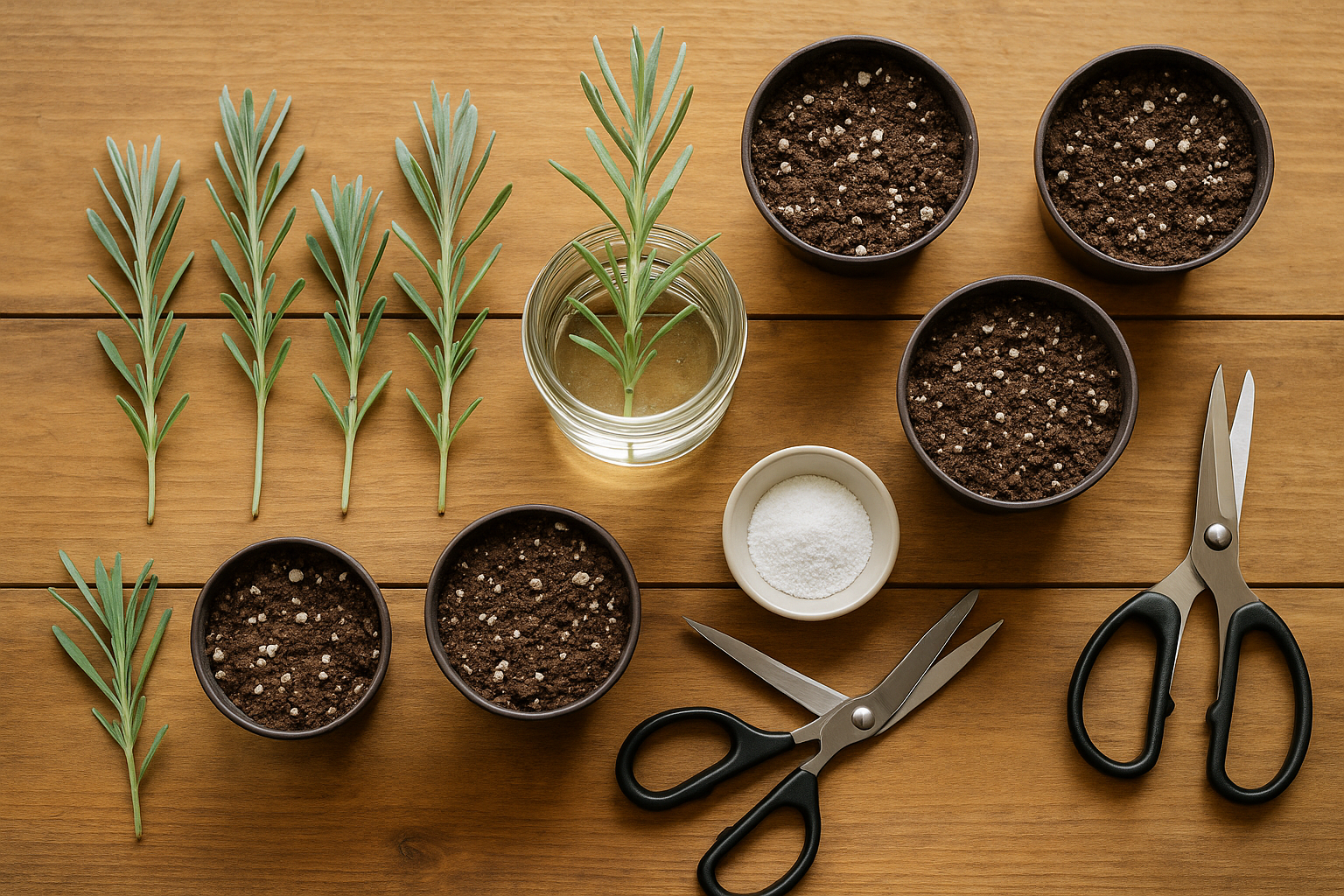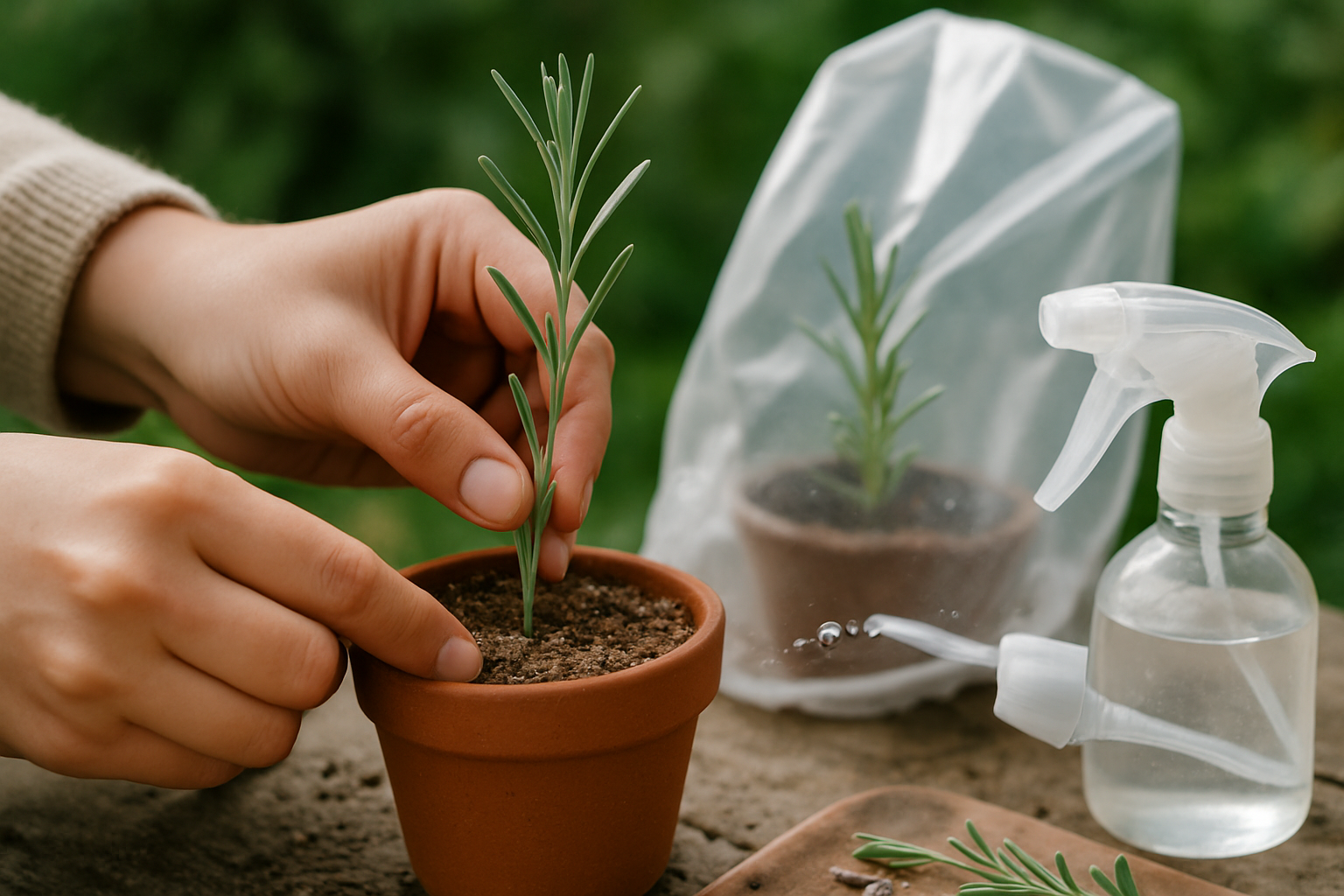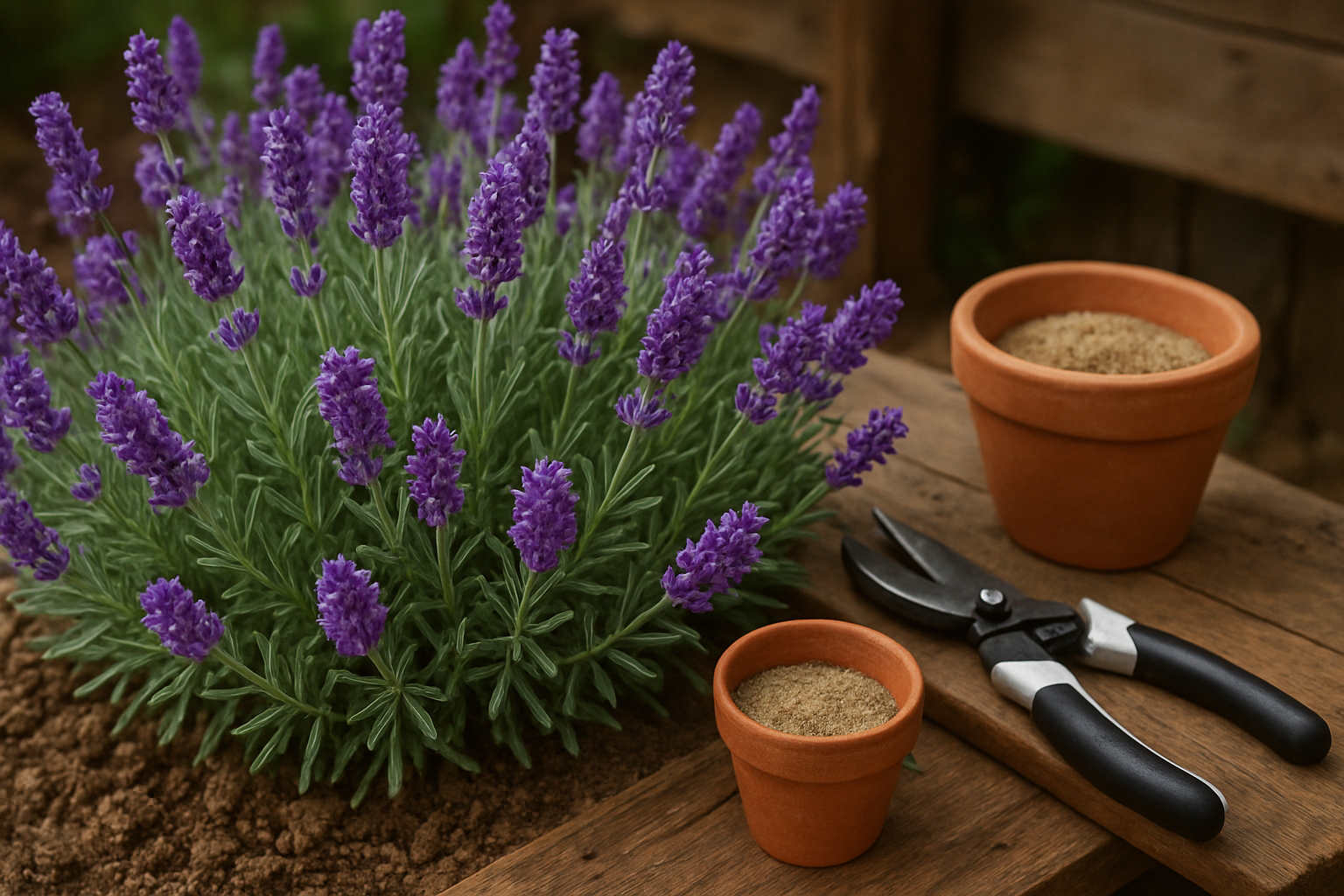Introduction
If you’ve ever fallen in love with the intoxicating scent of lavender and admired its vibrant purple blooms at your local market, you may have wondered if it’s possible to regrow lavender from store-bought plants. The idea is especially appealing—not only can you expand your garden for a fraction of the cost, but you’ll also give a second life to those potted beauties you picked up on your last shopping trip.
Lavender’s timeless appeal lies in its fragrant foliage, drought tolerance, and versatility in everything from homemade sachets to herbal teas. In this guide, you’ll discover how to regrow lavender from store plants using simple propagation techniques like stem cuttings and division, along with practical tips to ensure success at home.
We’ll cover what tools you’ll need, when and how to take cuttings, and common mistakes to avoid. Regrowing lavender from store-bought plants is not only budget-friendly—it’s also an empowering way to kickstart your gardening journey, reduce waste, and enjoy a fresh supply of this beloved herb all season long.
Ready to breathe new life into your store-bought lavender? Let’s dive in!
Understanding Lavender Propagation

Propagation is the process of creating new plants from existing ones, and it’s an essential technique for gardeners looking to expand their lavender collection without buying new plants each time. Propagating lavender not only saves money but also ensures you get plants that are well-suited to your local conditions.
If you’ve bought a healthy lavender plant from a nursery or store, you can likely propagate it yourself—as long as it hasn’t been treated with growth inhibitors that prevent rooting. Always check labels or ask staff if you’re unsure, since growth inhibitors are sometimes used to control plant size for shipping and display.
There are four main ways to propagate lavender:
- Cuttings: A popular and efficient method. Simply snip a healthy, non-flowering stem, dip it in rooting hormone if you like, and plant it in well-draining soil.
- Division: This involves carefully splitting an established lavender plant. It works best with older varieties that grow in clumps.
- Seeds: Growing lavender from seed is possible but requires patience, as germination is slow and seedlings can be unpredictable.
- Layering: Bend a low-growing stem to the ground, cover part of it with soil, and wait for roots to develop before cutting it free to transplant.
With the right method and a little attention, you’ll soon have more fragrant lavender thriving in your garden.
Regrowing Lavender from Cuttings

Regrowing lavender from cuttings is a simple and rewarding way to expand your garden using store-bought plants. Start by choosing a healthy lavender bundle, ideally in late spring or early summer when the plant is actively growing and less likely to be stressed.
Look for non-flowering stems that are firm and free from disease—these are called “softwood” cuttings and root more easily than woody, older stalks. Use clean, sharp scissors to snip 4-6 inch pieces just below a leaf node, removing any lower leaves and flowers to reduce moisture loss.
For rooting, you can place the cuttings either in well-draining potting soil or a jar of clean water.
- If using soil: Dip the stem in rooting hormone powder for better success, then insert it about 2 inches deep in a small pot. Mist the soil lightly and cover with a plastic bag to create humidity.
- If using water: Submerge only the base of the stem and change the water every few days to prevent rot.
Keep the cuttings in bright, indirect light and check for root growth after 2-4 weeks. Once substantial roots have formed, transplant your young lavenders into larger pots or directly into the garden, making sure the soil is light and drains well.
Common Mistakes to Avoid
- Overwatering
- Using heavy soils
- Exposing cuttings to direct sunlight, which can cause wilting or fungal issues
Always use clean tools, monitor moisture levels, and be patient—some cuttings root faster than others. With a little attention, your store-bought lavender can thrive and provide fragrant blooms for seasons to come.
Other Lavender Propagation Methods
Growing lavender from seeds can be rewarding, but it comes with challenges that gardeners should be aware of. Seeds often take weeks to germinate, and the plants grow slowly, which means you may not see blooms until the second year. Another important point is that many store-bought lavenders are hybrids, so seeds collected from those plants might not produce offspring true to the parent—you’ll likely end up with plants that look and smell a bit different.
For those with mature, bushy lavender plants, division is an alternative propagation method. This involves carefully splitting an established plant into several smaller clumps, each with roots attached. Division works best in early spring or fall and is ideal for older lavenders that have outgrown their space or started to thin out in the center. Just keep in mind that not all lavender varieties respond well to division, especially if they have a woody base, but more herbaceous types can bounce back quickly.
Layering is another, less common but effective technique worth mentioning. With layering, you bend a low-growing stem to the ground, slightly wound or strip a small section of bark, and pin it into contact with the soil. Over time, roots will develop at the contact point, and you can sever the new plant from the parent once it’s established. Layering takes patience—several months or even up to a year—but it’s incredibly reliable for tricky lavender types or when cuttings just won’t root.
While not as fast as other methods, layering is a great tool for patient gardeners wanting to expand their lavender patch with minimal risk to the parent plant.
Caring for New Lavender Plants
When transplanting your newly propagated lavender outdoors or into larger pots, timing and preparation are key. Wait until the risk of frost has passed and your lavender cuttings have developed a strong root system—look for roots filling the bottom of their current container.
Choose a sunny spot, as lavender thrives with at least six hours of direct sunlight daily. For container planting, pick a pot with drainage holes to prevent soggy roots. Use well-draining, sandy or gritty soil, ideally amended with horticultural sand or perlite.
When transplanting, gently tease the roots loose and plant the lavender at the same depth it grew before. After moving, water thoroughly but avoid overwatering; lavender prefers to dry out a bit between waterings. Overwatering is a common mistake and can lead to root rot—if you notice yellowing leaves or mushy stems, reduce watering and improve drainage.
Once established, water only when the top inch of soil is dry. Lightly prune your new plants after blooming to encourage bushier growth and prevent legginess, but avoid heavy pruning in the first year since young lavender needs time to fill out.
Watch for signs of transplant shock such as wilting or slowed growth. If necessary, shelter plants from harsh midday sun for a few days and keep the soil consistently moist but not wet. By focusing on sun, drainage, and patience, your new lavender plants will settle in and thrive, rewarding you with fragrant blooms season after season.
Frequently Asked Questions About Regrowing Lavender
Many people wonder if it’s possible to regrow lavender from store-bought stems, and the answer is yes—if the stems are fresh and healthy. Look for green, pliable stems rather than woody or dried ones, as these are more likely to root.
Rooting store-bought lavender can take anywhere from 3 to 6 weeks, depending on temperature, humidity, and the condition of the cuttings. If your cuttings aren’t rooting or turn brown and mushy, check that you’re using well-draining soil and avoid overwatering, since lavender hates soggy conditions.
Sometimes a little powdered rooting hormone can help improve your success rate, and trimming leaves from the bottom of the stem reduces moisture loss. Don’t be discouraged if your first attempt doesn’t work—lavender can be tricky, and even experienced gardeners face failed cuttings now and then.
Try taking several cuttings at once to boost your odds, and remember to place them in a warm, bright spot out of direct sunlight. With patience, practice, and a bit of care, you’ll soon enjoy the satisfaction of growing your own lavender plants from simple cuttings.
Conclusion
Regrowing lavender from store-bought plants is absolutely possible, especially if you follow the right steps for propagation. With simple methods like taking healthy cuttings, using well-drained soil, and providing plenty of sunlight, you can turn one lavender plant into several new ones.
Not only is the process rewarding, but it also lets you fill your garden or home with fragrant, beautiful plants without any extra cost. Don’t be afraid to give it a try—even beginners can find success! Enjoy the calming scent of lavender while learning something new and watching your garden flourish. Happy growing!
